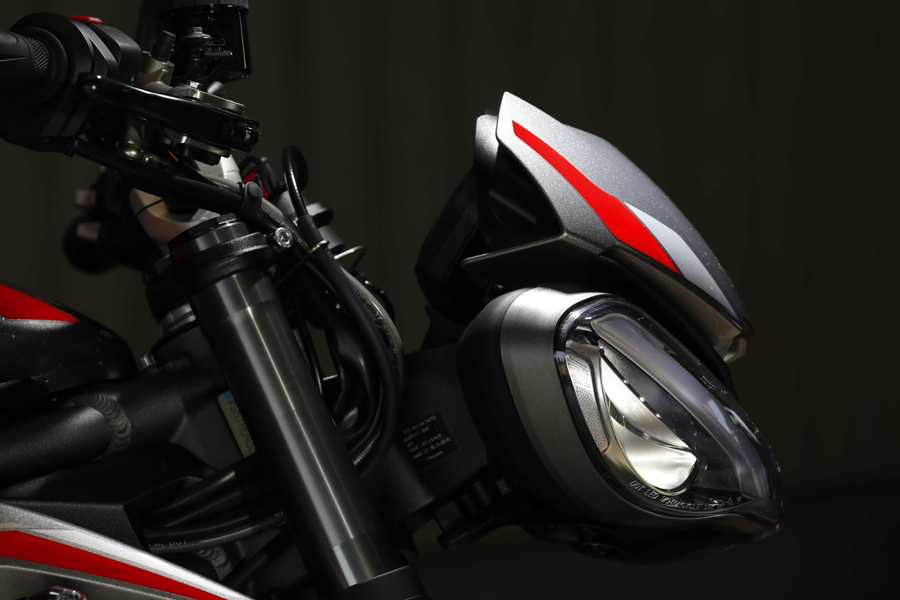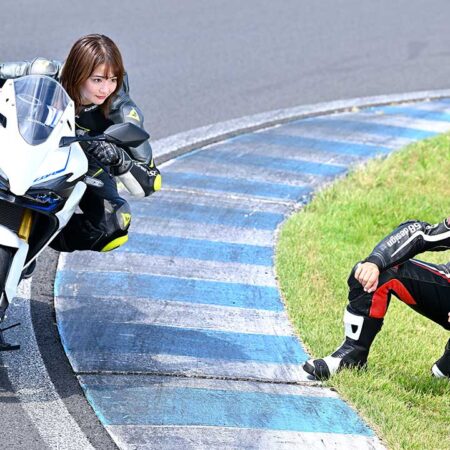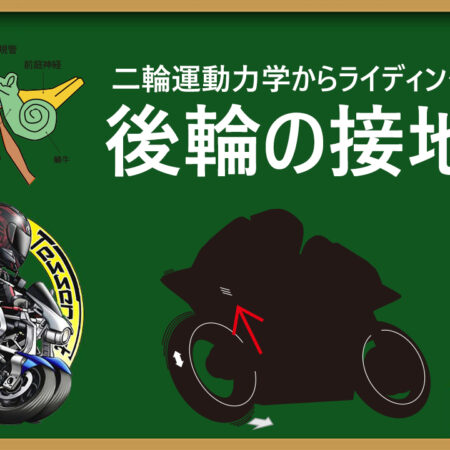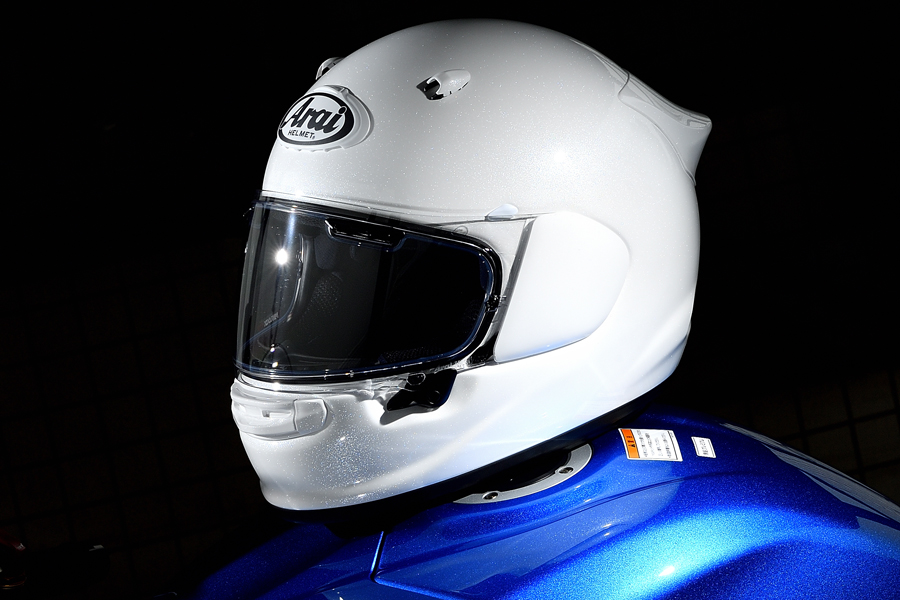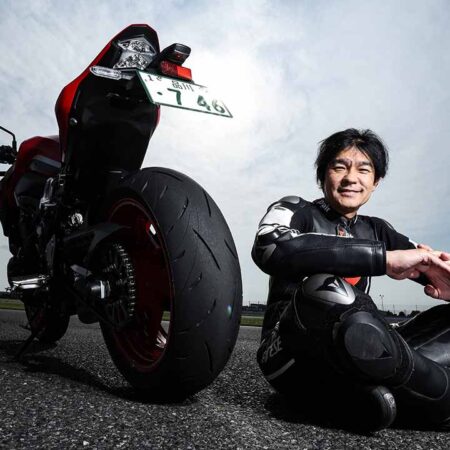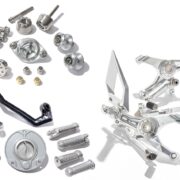An explanatory article on motorcycle engine basics, trivia and historic masterpieces
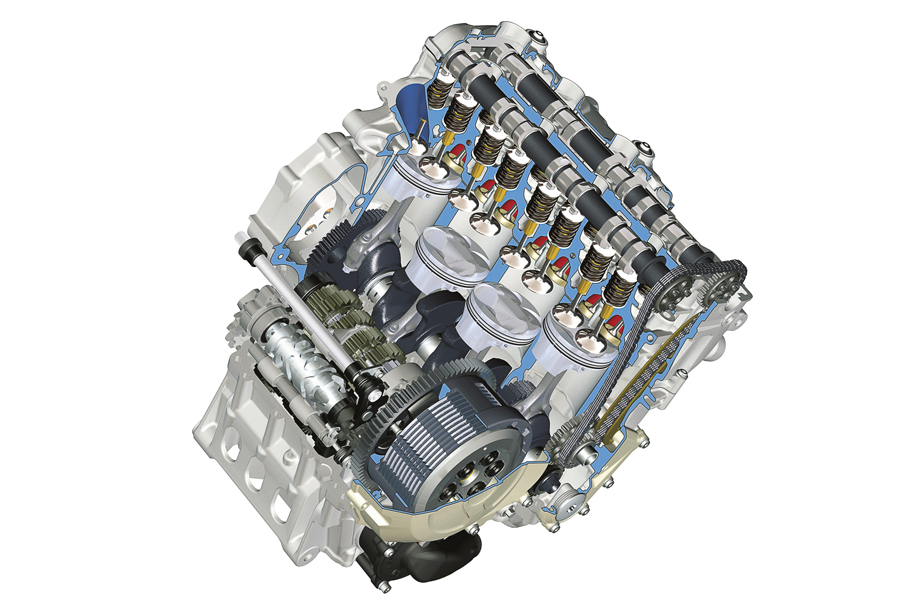
The resurgence of two-stroke and its sudden fall after the triumph
When it comes to the replicas, we should talk on ‘two-stroke.’ In the first place, the other manufacturers than Honda put two-stroke onto their mainstream development, but the rise of large displacement bikes and the four-stroke forced the manufacturers to shift to the four-stroke, which made the two-stroke nearly extinct in the mid-1970’s. However, the appearance of Yamaha’s liquid-cooled RZ250 to which the manufacturer applied the technologies from its racer bike, TZ250, made the two-stroke resurge suddenly. Additionally, the motorcycle boom made the professional motorcycle racing such as WGP (now MotoGP) and All Japan Road Race Championship into a major entertainment, and that boosted the two-stroke’s popularity since GP machines used the same two-stroke.

TZR became the forerunner of the real two-stroke replicas. The motorbike series followed the racer bike, TZ250, evolutions going through the parallel two-cylinder, rear exhaust and V-shaped two-cylinder.
The two-stroke has a simple structure and is lighter, and the four-stroke has to rotate twice as many as the two-stroke to generate the same level of power in a simple comparison. So, it is reasonable that the two-stroke got the popularity in 250cc class, and the two-stroke was sufficiently comparable even with 400cc four-cylinder. Its engine intake system used piston reed valves, rotary disk valves in the same as the racer bikes, the crankcase reed valve system which is good in terms of fuel efficiency and handiness.
Also, the two-stroke’s engine characteristic ‘peaky and delicate, weak torque at low speed’ was addressed by the exhaust device ‘YPVS’ Yahama’s RZ250R (1983) was equipped with, and the competitors took similar systems. Then, after the mid-1980’s, there arose the two-stroke replicas like ‘a racer bike with safety features’ the manufacturers developed simultaneously with their racer bikes. These trends had gone on to the mid-1990’s the two-stroke declined due to the rise of emission control regulations and its lack of fuel efficiency.
Unexpectedly, no innovative engine technology was raised in 1990’s (of course, the existing technologies ripened and evolved though.) Among them, the eight-valve oval piston V4 engine in Honda’s NR750 debuted in 1992 attracted some motorcyclist attentions and exactly reflected feedbacks from racing technologies. Unfortunately, however, the nature of extremely high cost and race regulation change soon drove out the engine out of the spotlight.
Hectic chase by non-Japanese manufacturers pursuing for ease of riding
This article so far has dealt only with Japanese-made motorcycle engines, but how were non-Japanese manufacturers going? In fact, they didn’t make radical change of their engine layouts and structures in a short cycle, and they had stuck to their basic layouts before 1980’s. This sounds that they saw almost no evolution, but it is not true at all.
Ducati, based on their traditional air-cooled L-twin, debuted the liquid-cooled four-valve DOHC, 851, in 1988, BMW, who is seen to stick to the flat-twin, released K100 with the longitudinal liquid-cooled four-cylinder engine in 1983. The common and most noticeable thing in the two motorcycle models is the application of the fuel injection (FI) system. After that, Ducati and BMW have been ripening the FI technology, but somehow Japanese manufacturers got down to the use of FI finally in the late-1990’s.

‘Wizard’ Massimo Tamburini reformed the liquid-cooled four-valve 851 born in 1988 and produced 916 series. The narrow angle valve engine ‘Testastretta’ showed up in 2001’s 996 debut.
Up to the mid-2000’s, Japanese manufacturers had had clear advantages over non-Japanese ones in terms of supersport bikes, but non-Japanese supersport bikes made remarkable progress in early 2010’s. Their drastically reformed engines generated high performance comparable with Japanese four-cylinder engines, and beyond that they took the lead in the ‘handy’ electric controlling device technology.
Japanese manufacturers naturally tried to catch up. Starting with YZF-R1 in 2015, they consecutively put new models into the market. Motorcycle manufacturers pursued high rotation and output engines in the past, but they now go after handy and efficient engines. The competition for the quality of the engine control is likely to intensify further between advancing non-Japanese and glorious Japanese manufacturers. It deserves your attention.

The engine was consistent with the 2009’s cross-place parallel four-cylinder in concept, but drastically reformed. The motorcycle model was equipped with the engine of fully electric control mainly by IMU (inertial measurement unit, which measures the angular and acceleration rates of the motion’s three laws) and became the start of Japanese manufacturer’s counterattack against the foreign competitors.
What are the noticeable electric control systems of the next generation?

Riding mode
Using the riding mode, the maximum output, torque and throttle response can change, depending on driving scenes such as raining, sport, race etc. Some motorcycles have slick tire mode.
Traction control
The traction control detects the spins of rear wheels, reduces the torque by electric control throttle and fuel/ignition control and make the machine gain the traction efficiently. The driver can change the level of the stability control intervention and the system can be switched on/off.
Quickshifter
The quickshifter enables the driver to shift gears without using the clutch or throttle. With no interruption to the traction, the driver can shift gears when leaning at the start of a corner.
DCT (Dual-clutch transmission)
DCT is the system for multi-speed transmission which uses two separate clutches for odd and even gear sets. The driver can choose full automatic or semi-automatic transmission by clicking buttons.



